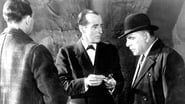TheLittleSongbird
Am a huge fan of Sherlock Holmes and get a lot of enjoyment out of Arthur Conan Doyle's stories. Also love Basil Rathbone's and especially Jeremy Brett's interpretations to death. So would naturally see any Sherlock Holmes adaptation that comes my way, regardless of its reception.Furthermore, interest in seeing early films based on Conan Doyle's Sherlock Holmes stories and wanting to see as many adaptations of any Sherlock Holmes stories as possible sparked my interest in seeing 'The Triumph of Sherlock Holmes', part of the series of film with Arthur Wontner. Would also see anything that has Holmes encountering his arch-nemesis Professor Moriaty. 'The Triumph of Sherlock Holmes', based on one of Conan Doyle's longer and best stories, turned out to be very much worthwhile. Not one of the best Sherlock Holmes adaptations certainly, the best of the Jeremy Brett adaptations and films of Basil Rathone fit under this category. It's also not among the worst, being much better than any of the Matt Frewer films (particularly 'The Sign of Four') and the abominable Peter Cook 'The Hound of the Baskervilles'.It's not perfect. The sound quality is less than great, while some of the pace could have been tighter, the over-reliance on the flashback structure bogs it down a bit, and some of the dialogue unnecessarily rambles a bit. The Holmes retiring aspect is agreed out of character. However, the period detail is handsome and evocative. The writing generally is thought-provoking, Holmes' deductions and crime solving are a huge part of the fun as well as very true in detail and spirit to Conan Doyle's writing, the mystery and suspense is generally intact and the story is intriguing and not hard to follow.Arthur Wontner may technically have been too old for Holmes but he did not look too old and his portrayal is on the money, handling the personality and mannerisms of the character spot on without over-doing or under-playing. Ian Fleming is a charming, loyal, intelligent and amusing Watson, with nice chemistry between him and Wontner, really liked his inferior attempts at deduction. The support is solid, with the best coming from Lyn Harding's sinister Moriaty.In summary, not quite triumphant but very worthwhile. 7/10 Bethany Cox
tedg
This is the second of the early Holmes film experiments that I have seen. In The Sign of Four, they messed up the detective form by showing us the entire history before Holmes appears. Here, they do something similar. While Holmes interviews a woman about her recently dead husband, we have the major part of the film time occupied in a flashback illustrating her story. That story is a small film by itself. The outer story is a combat between Moriarty and a *retired* Holmes that ends with a chase up a medieval tower with what might have been exciting camera-work in its day. This story does respect Holmes as a detective, and the task he tackles is not something we already understand. I can see that as they made extra films, they tried different mixes of explicit storytelling and deduced and explained stories.
JohnHowardReid
Arthur Wontner was re-teamed with Ian Fleming (who had played Dr Watson in The Sleeping Cardinal and The Missing Rembrandt) for The Triumph of Sherlock Holmes (1935), based on Conan Doyle's novel, "The Valley of Fear". Like the novel, the movie contains a considerable flash-back sequence. This seems to have been directed, photographed and recorded by a totally different team than that credited for the main unit. The noisy sound track suddenly disappears, the lighting becomes more slickly atmospheric, the pace steps up, the acting changes from throw-away (Wontner) and over-emphatic (Harding, Fleming) to vigorously forceful and realistic, while the static, stage-like groupings in the main story are replaced by a more dynamic, cinematic style of fast pacing, tight frame arrangements and astute use of close-ups. Another indicator of behind-the-camera changes is that Jane Carr's performance bears little resemblance to her fluctuating, unsure interpretation in the Hiscott sequences (although admittedly this is in tune with her character). I usually finds flashbacks annoying but this one proves actually more exciting than the main movie. Still, Wontner does have his moments of glory, Fleming is an agreeable Watson, and there is sufficient action and deduction to keep fans highly involved, despite the technical short-comings of even the best of the currently available DVDs.
Snow Leopard
This is a good entry in the Arthur Wontner series of Sherlock Holmes movies, adapting one of Arthur Conan Doyle's most interesting and involved stories. The movie does a solid job of telling the story within its obvious budgetary constraints, Wontner as usual looks authentic as Holmes, and the story does the rest. Lyn Harding is solid as Moriarty, but as this series tended to do, the character is played more as a tough guy than as a twisted genius of crime.The original story is a particularly good one because it takes a Holmes mystery with the usual intriguing details and puzzles, and combines it with an elaborate story about the backgrounds of the other characters involved. The original story has rarely been used in the movies, and it was unfortunately one of the ones not included in the outstanding Jeremy Brett series. So it's particularly fortunate that this version of it is still around.The settings range from an old English castle to a rough part of the USA where outlaws are in charge. It's too bad that the production values were so low, because with some extra work, the settings could really add a lot to the atmosphere. Here, at least, they provide just enough to make a believable backdrop to the interesting story.



